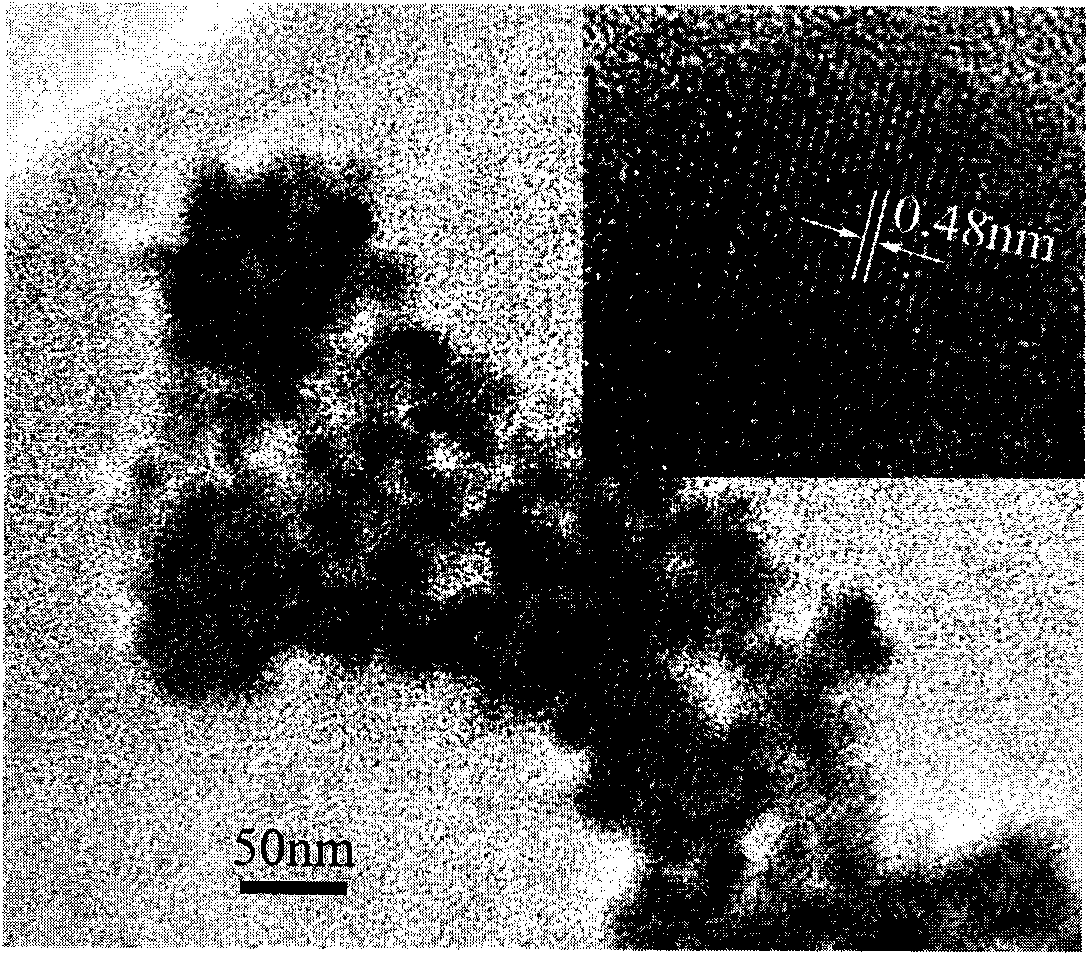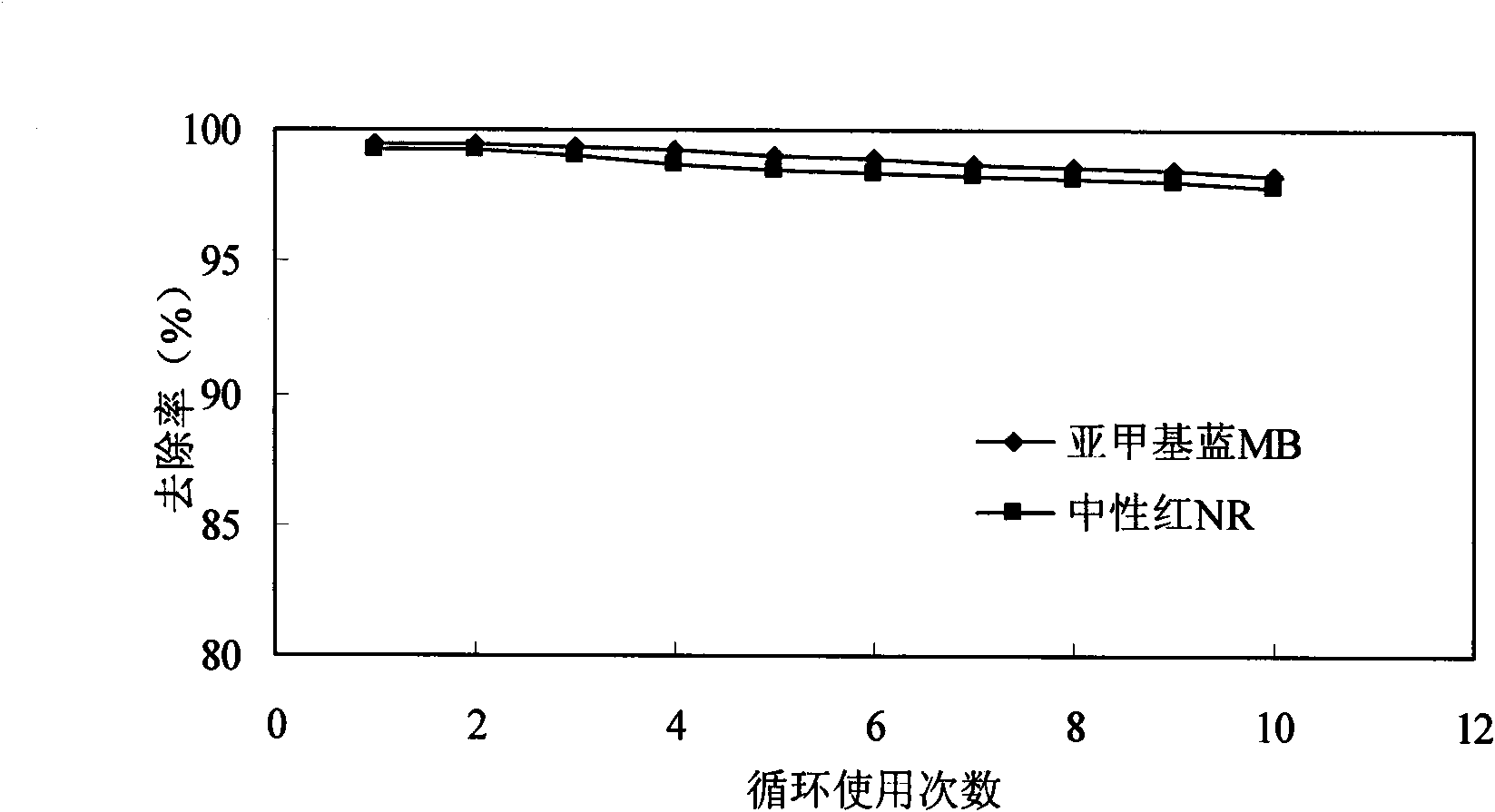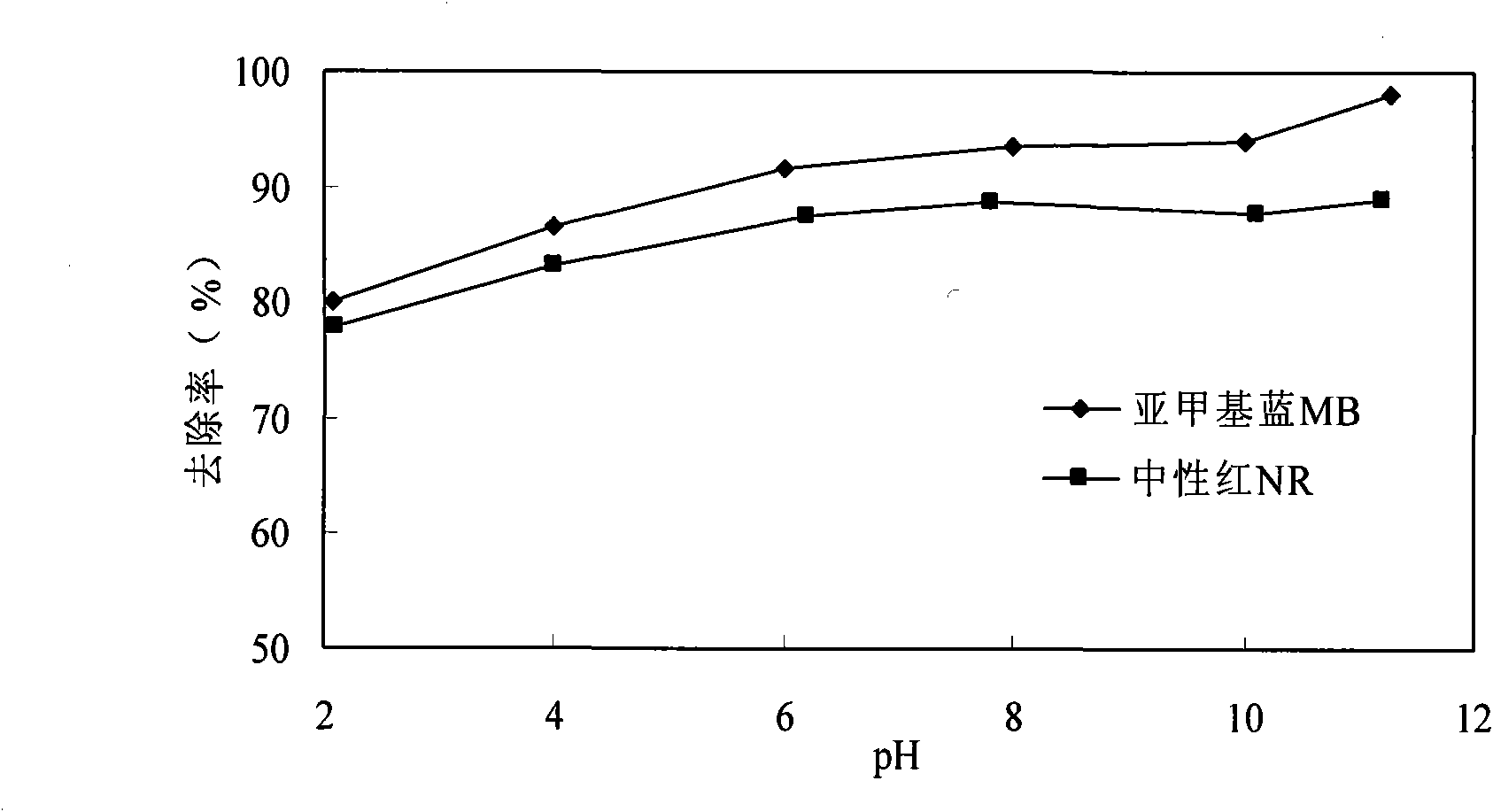Method for removing organic cationic dyes from waste water by magnetic nano adsorption material
A technology of magnetic nano and organic dyes, applied in adsorption water/sewage treatment, chemical instruments and methods, magnetic field/electric field water/sewage treatment, etc., can solve the problems of high cost, nano-pollution of adsorbents, complicated desorption and regeneration methods, etc. To achieve the effect of easy control, simple raw materials and abundant reserves
- Summary
- Abstract
- Description
- Claims
- Application Information
AI Technical Summary
Problems solved by technology
Method used
Image
Examples
Embodiment Construction
[0026] 1. Preparation of magnetic nanoadsorption materials
[0027] Dissolve 1kg humic acid and 1kg sodium hydroxide in 0.1m 3 In water, use nitrogen to completely replace the oxygen in the reactor to achieve anaerobic environment, heat the solution to 100°C under stirring conditions, and reflux; prepare a mixed solution of ferric chloride and ferrous sulfate in a molar ratio of 2:1, wherein chlorine The concentration of ferric oxide is 0.8mol / L, and the solution is added to the solution containing humic acid at a volume ratio of 1:12, continue to stir and heat to reflux for 2-2.5h, and then drop to room temperature; Carry out solid-liquid separation, wherein the obtained solid components are washed several times with deionized water until neutral, dried and ground into powder to obtain magnetic nano-adsorption materials. The prepared magnetic nano-adsorbent uses humic acid as the adsorption active ingredient, and the magnetic Fe 3 o 4 Nanoparticles are used as immobilized ...
PUM
 Login to View More
Login to View More Abstract
Description
Claims
Application Information
 Login to View More
Login to View More - Generate Ideas
- Intellectual Property
- Life Sciences
- Materials
- Tech Scout
- Unparalleled Data Quality
- Higher Quality Content
- 60% Fewer Hallucinations
Browse by: Latest US Patents, China's latest patents, Technical Efficacy Thesaurus, Application Domain, Technology Topic, Popular Technical Reports.
© 2025 PatSnap. All rights reserved.Legal|Privacy policy|Modern Slavery Act Transparency Statement|Sitemap|About US| Contact US: help@patsnap.com



